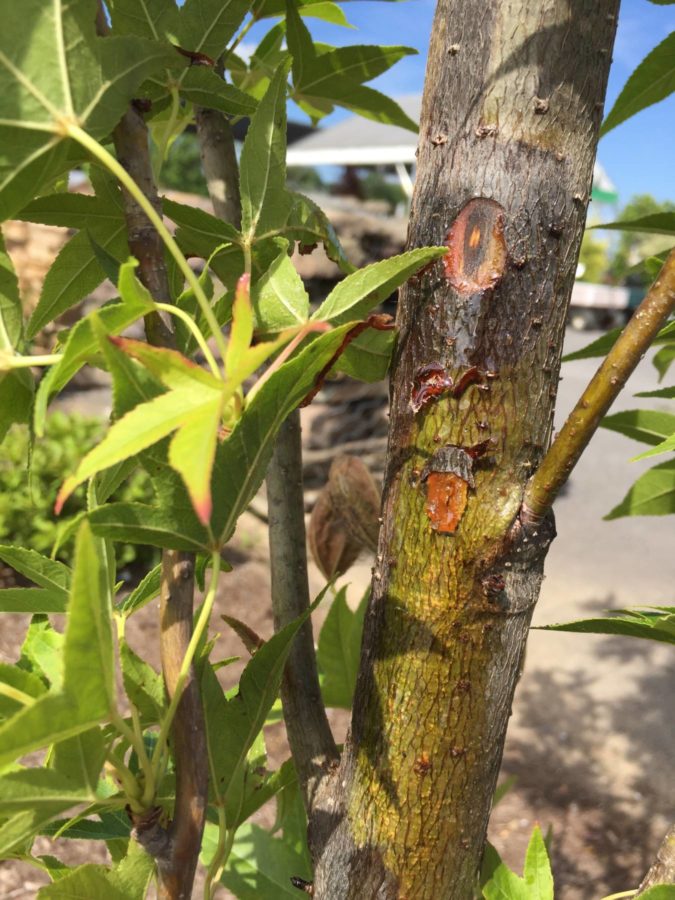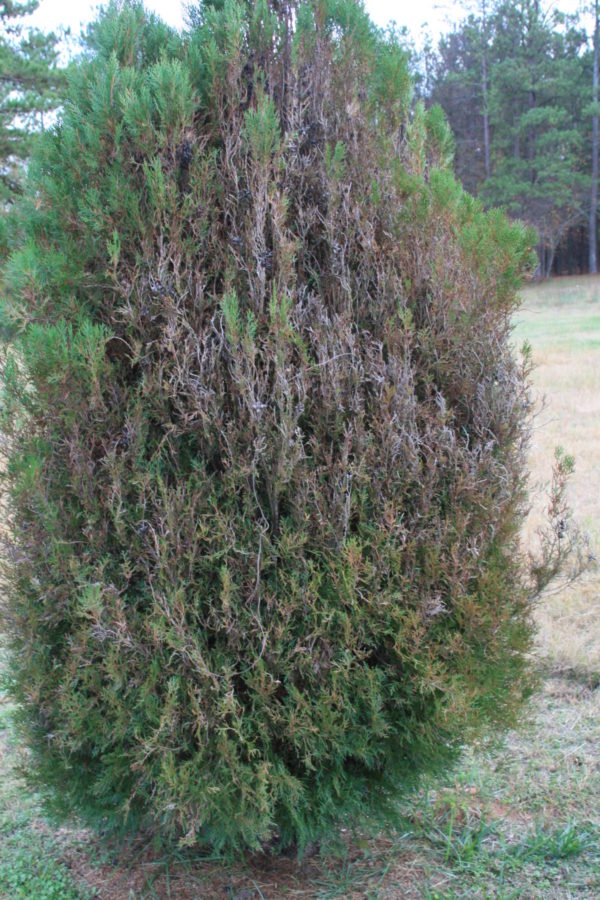
Will Climate Change Impact the Health of Outdoor Crops?
If you have any doubts about whether climate change is real, look no further than what is happening this year in regards to the weather extremes occurring worldwide. Most recently in our own backyard there are the record-setting high temperatures and historic drought conditions in parts of the western United States and Canada, excessive precipitation in Midwestern and Northeastern states, and increased hightide flooding along the Southeast Atlantic and Gulf coastlines. European countries haven’t fared much better, with flooding in Germany, Belgium and the Netherlands. The New York Times reported the flooding that occurred in Europe hasn’t been this severe in 1,000 years.
With these historic weather phenomena becoming the norm rather than the exception, their impact is having a devastating effect on people’s livelihoods. According to the report, “Scientific review of the impact of climate change on plant pests” (www.fao.org/3/cb4769en/cb4769en.pdf) climate change is a threat to the Earth’s biodiversity, to human health and to the world’s economy. Released in June by the Food and Agriculture Organization of the United Nations (FAO), the report’s authors looked specifically at the impact climate change is having on plant health. While much of the press coverage has been on the impact climate change is having on agricultural crops and their losses, the FAO report said horticultural crops and forest trees also are being impacted.
IMPACT ON PLANT PESTS, DISEASES
One of the biggest impacts climate change is having, according to the FAO report, is on the “infectivity, severity and distribution of pests throughout the world.” The report’s authors found most completed studies showed that, in general, “pest risk from insects, pathogens and weeds will increase in agricultural ecosystems under climate-change scenarios, especially in today’s cooler Arctic, boreal, temperate and subtropical regions.”

and ornamental trees, including sweetgum (shown). Environmental stress factors, including hot temperatures, drought, freeze injury and compacted soil, can increase susceptibility of trees and shrubs to infection by the fungus. (Photo: Jean Williams-Woodward)
The data in the FAO study “strongly indicates that in many cases climate change will result in increasing problems related to plant health in managed (e.g., agriculture, horticulture, forestry), semi-managed (e.g., national parks) and presumably also unmanaged ecosystems.” Plant-protection protocols have already been adjusted because of recent climatic changes. The report said additional adjustments will be necessary if projected climate-change scenarios occur in the future.
IMPACT ON OUTDOOR ORNAMENTAL CROPS
Jean Williams-Woodward, Extension plant pathologist at the University of Georgia, expects climate change will make it increasingly more difficult for outdoor ornamental plant growers to control diseases than for controlled environment growers.
“Outdoor growing conditions are continually changing and can change very quickly,” Williams-Woodward says. “Outdoor growers don’t have a lot of options to control these changes. There can be excessive high and low temperatures, excessive precipitation, early freezes in the fall and late freezes in the spring.
“Extreme conditions of drought, temperature and precipitation are definitely going to increase disease infection. Plant tissue is going to be injured by environmental events including wind damage, freeze damage, breaking of branches and stems and leaf pitting from blowing soil or sand. These can all create wounds that are entry points for pathogens. Phytophthora and Rhizoctonia can enter plants through these wounds and cause stem rot. Leaf spots, particularly bacterial leaf spots, can also increase because of the wounding.”

Another area of potential increased disease infection is in growing substrates.
“Saturated substrates will lead to increased root diseases,” Williams-Woodward says. “There are also cases of extreme substrate saturation followed by severe drought conditions — going from too wet to too dry. This can lead to increased plant death because the roots are damaged during high moisture saturation. The compromised roots can’t translocate water through periods of drought. Even if an adequate amount of water is applied using irrigation during drought periods, the roots have been compromised and can’t translocate water. Extreme heat causes too much transpiration and the roots can’t translocate enough water to support the canopy so the plants die.”
IMPACT OF EXCESSIVE PRECIPITATION
Williams-Woodward says the biggest climate change that will have an impact on plant diseases on outdoor ornamental crops is excessive rainfall.
“When there is prolonged high leaf wetness and high humidity those are the conditions that are needed for most foliar pathogens,” she says. “Saturated soils will lead to an increase in root diseases because major root diseases like Phytophthora need to have water in order to infect the plant roots.
“Water is essential for many fungal pathogens. Water splashing is going to spread more fungal spores and bacterial cells. Growers can expect to see more disease spread as a result of the excessive water splashing occurring from rainfall.”
The excessive amounts of precipitation also make it difficult for outdoor growers to apply fungicides in a timely manner.
“During extended periods of rainfall, which has occurred a lot in Georgia, it has been difficult for growers to apply foliar fungicide applications so they can dry on the plants. In many cases the foliage has to remain dry for four hours after application in order for the fungicides to be effective. It is becoming increasingly difficult for growers to apply a fungicide across an entire crop in the time window that is available. These kinds of events can cause a reduction in fungicide efficacy leading to an increase in disease infection.”
If climate change causes periods of wetter weather with higher humidity and warmer temperatures, especially during winter months, Williams-Woodward expects growers will see more bacterial disease infections.

“About 80 to 90% of grower disease problems are caused by fungal pathogens,” she says. “Around 10% of ornamental plant diseases are caused by bacteria. I expect growers will see an increase in bacterial diseases as the weather becomes wetter and warmer. In Georgia, we are starting to experience weather conditions which are more typical of Florida. In Florida, ornamental plants tend to be infected 30 to 40% by bacterial diseases.”
IMPACT ON DISEASE MANAGEMENT PRACTICES
Because of the increasing unpredictability of the environment, outdoor growers don’t know whether there is going to be severe drought, excessive precipitation or temperature extremes.
“To try to reduce disease infection, it is even more important for growers to follow the guidelines that are available to them,” Williams-Woodward says. “Sanitation, proper plant spacing, proper nutrition and timely irrigation regimes will become even more important. Growers should be trying to produce as healthy a plant as possible. Doing all of the cultural and management practices that are recommended will go a long way in avoiding disease infection.
“I expect growers will also have to apply more preventive fungicide applications. It may even get to scheduled calendar-based applications. Some growers are already doing this. It is becoming more difficult to apply fungicides for specific diseases on different plants.”
Scouting the plants will become even more critical to identify disease infections.
“The sooner growers can identify early disease symptoms, the better the chance of controlling the disease,” Williams-Woodward says. “Diseases don’t disappear, so growers should keep good records of disease incidents, when they occurred and how they were treated. These records can be useful in knowing how to treat a disease if and when the disease reoccurs.”
IMPACT ON PEST DISSEMINATION
The FAO report indicates that invasive pests cost countries as much as $70 billion annually. Josh Vlach, entomologist at the Oregon Department of Agriculture, and his colleagues are working to keep invasive species out of the state.
“Dealing with pests outdoors is more difficult than controlling pests indoors because there are many more variables including typically trying to provide control over a larger area,” Vlach says. “This makes incorporating biological control agents outdoors more difficult and more expensive.
“In Oregon we have been accumulating on average nine non-native pest species per year. These are all new pests with one in five considered to be a significant economic pest. Every year, on average, a significant economic pest is being brought into the state.”
Vlach is particularly concerned about the effect warming temperatures will have on pests entering Oregon.
“As the climate changes, it is getting drier and warmer in Oregon, we are starting to see some warm-climate pest species having the ability to become established here,” he says. “There are people in Oregon who are growing warm climate plants, including almonds, eucalyptus and bananas, with some of them having the ability to become established here.
“One of the things growers can do is to start to trial and select plants that can adapt to the changing weather conditions. The U.S. Forest Service (www.fs.usda.gov/ccrc/tool/seedlot-selection-tool) is already doing this. Trees are being brought in that can tolerate drier, hotter conditions.”
Vlach says selection pressure drives evolution. Climate extremes are causing selection of pests that will do better under these extreme conditions.
“These pests have to deal with higher temperatures, drought conditions and higher rates of precipitation,” he says. “Developing resistance to pesticides is another selection pressure. The more organisms that are produced the more chances there are for variation and selecting for different traits.
“Increases in generation times causes more generations per season which is the situation where insects can best develop resistance. If there is exponential growth with multiple generations in a season there is an increased chance the pests are going to develop resistance to pesticides.”
As temperatures warm, pests that wouldn’t have been able to survive Oregon winters outdoors are now becoming a year-round pest for both indoor and outdoor growers.
“Greenhouse thrips were once thought to be a tropical/subtropical pest that would only be found in greenhouses in this area of the country,” Vlach says. “In Oregon we have had populations living outdoors on the coast since 2005.
“Along the Oregon coast greenhouse thrips have turned the evergreen shrub Salal (Gaulthoria shallon) paper white. This is the effect of the thrips sucking the chlorophyll out of the leaves. Previously the winters appeared to have killed off the thrips.
People are wondering how much warmer do temperatures have to rise in the Willamette Valley before the thrips start to survive there.”
Another pest Vlach is concerned about is the mountain pine beetle (Dendroctonus ponderosae).
“This pest has caused large pine tree kills in the West all the way up to British Columbia,” he says. “Previously the beetle hadn’t been able to cross over the Rocky Mountains. Unfortunately temperatures have increased and the beetle is now making its way east across Canada. Eventually I expect the beetle will become established in the Eastern U.S. and will begin attacking pine trees there. It will take time for the beetle to migrate across Canada, but eventually it will become established on the East Coast.”
For more information: Jean Williams-Woodward, University of Georgia, Department of Plant Pathology, 706.542.9140; jwoodwar@uga.edu. Josh Vlach, Oregon Department of Agriculture, Insect Pest Prevention and Management, 503.986.6458; jvlach@oda.state.or.us; www.oregon.gov/oda.


 Video Library
Video Library 




















